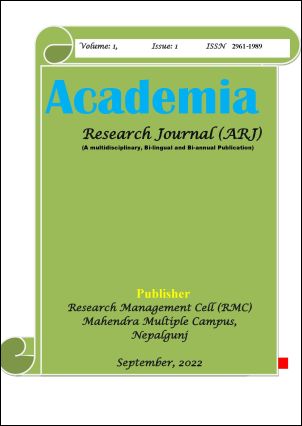Historicity of Swasthani
Redrawing the borders of Swasthani Bratakatha in light of New Historicism
DOI:
https://doi.org/10.3126/academia.v1i1.48747Keywords:
Myth, New Historicism, Socio-cultural context, SwasthaniAbstract
This research paper is an analytical study of the popular Hindu myth Swasthani, with the goal of redefining its boundaries and separating it from mythological and religious interpretations. For this reading, the researcher has taken Pallav Ranjan's Swasthani to English adaption as a major source of data. By applying new historicism as a literary tool, the researcher has analyzed Swasthani to draw the new boundaries of this popular myth in Nepal. From this qualitative analysis, it is concluded that this mythological narrative, when recorded for the first time in Nepal Bhasa by Jayanta Dev, mirrored the social reality of Medieval Nepal. Through the medium of myth, the social reality of the period is depicted in this mythical text. The study concluded that Swasthani is not merely a myth, but also a socio-historical record of Medieval Nepal, when Newar kings ruled the Kathmandu Valley.




